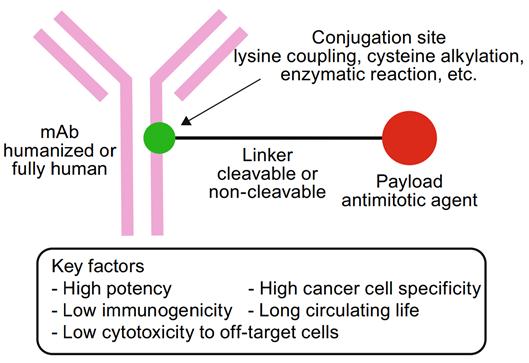We use cookies to understand how you use our site and to improve the overall user experience. This includes personalizing content and advertising. Read our Privacy Policy



CD BioGlyco has been focusing on glycosylation site-specific ADC development for many years. We provide three glycosylation site-specific conjugation strategies to bind payloads: 1) Glycan oxidation; 2) Glycan enzymatic modification; 3) Glycoengineering.
Due to the limited selectivity, systemic toxicity, and drug resistance of traditional small-molecule anticancer drugs against cancer cells, emerging targeted ADCs have received extensive attention from researchers. ADC is a humanized or human monoclonal antibody conjugated to a biologically active cytotoxic small molecule (payload) via a chemical linker. It targets cancer cells more effectively, thereby increasing the efficacy of the drug and reducing systemic toxicity. ADC is composed of three parts: antibody, cytotoxic drug, and the linker between them. During the development of ADCs, antibodies are the key to target specificity, and the payload drug is attached to different sites on the antibody through linker chemistry. Commonly used coupling methods include cysteine conjugation, glycoconjugation, unnatural or noncanonical amino acid incorporation, and peptide tags.
 Fig.1 General structure of ADC. (Tsuchikama & An, 2018)
Fig.1 General structure of ADC. (Tsuchikama & An, 2018)
After the ADC enters the bloodstream, the antibody component of the ADC recognizes and binds to cell surface antigens that are highly expressed in target cells to form an ADC-antigen complex, resulting in the endocytosis of the complex. The internalized complex is processed within the lysosome and releases the cytotoxic payload inside the cell. The released payload binds to its targets such as deoxyribonucleic acid (DNA) strands or microtubules, or exerts topoisomerase or ribonucleic acid (RNA) polymerase inhibition, ultimately leading to cell death. Cytotoxic chemical agents that typically have high potency against cancer cells but have low off-target cytotoxicity are used as payloads.
 Fig.2 General action mechanism of ADC. (Tsuchikama & An, 2018)
Fig.2 General action mechanism of ADC. (Tsuchikama & An, 2018)
Immunoglobulin G (IgG) molecules have a conserved glycosylation site at each N297 residue in the CH2 domain, and this site is sufficiently distant from the variable region that regulates antigen interactions. Therefore, binding to linked glycans is unlikely to impair antigen-binding affinity and may serve as an excellent surrogate for site-specific ADC generation. At CD BioGlyco, we offer three glycosylation site-specific conjugation strategies to bind payloads: 1) Glycan oxidation; 2) Glycan enzymatic modification; 3) Glycoengineering.
CD BioGlyco is dedicated to offering glycosylation site-specific ADC development services to help our global clients in this field. If you have a related ADC development project in hand, please feel free to contact us for more information.
References:
About Us
CD BioGlyco is a world-class biotechnology company with offices in many countries. Our products and services provide a viable option to what is otherwise available.

We use cookies to understand how you use our site and to improve the overall user experience. This includes personalizing content and advertising. Read our Privacy Policy